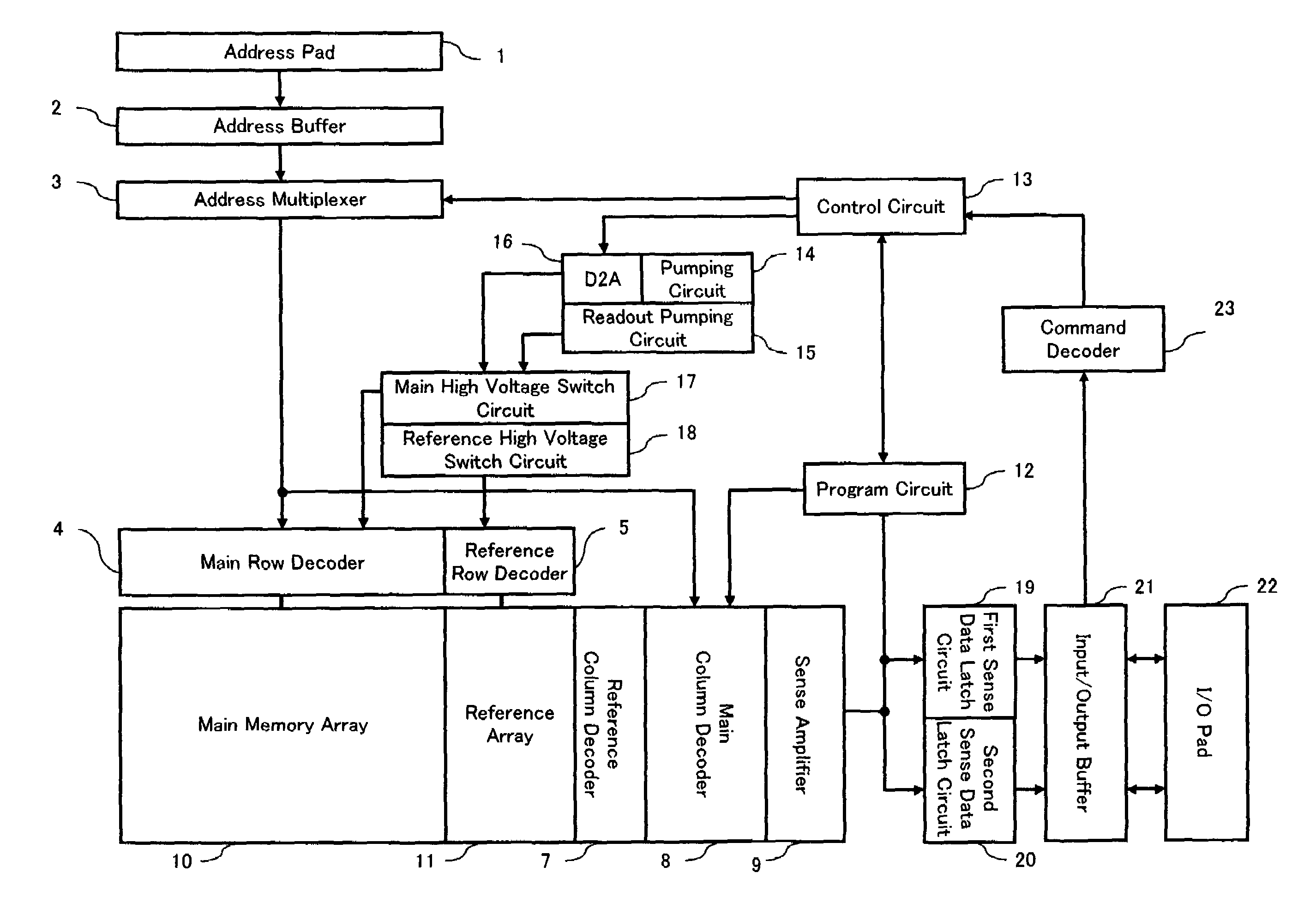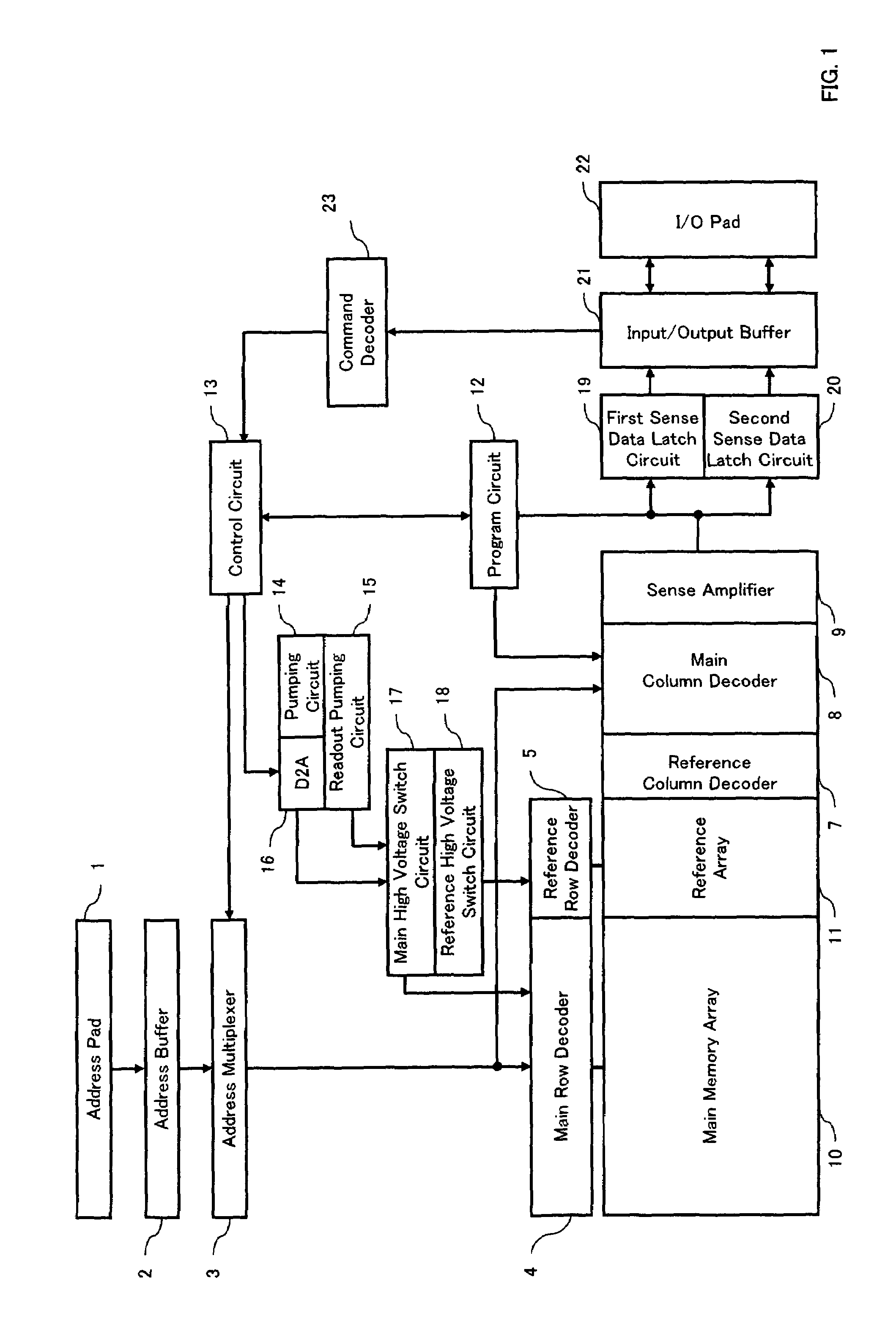Nonvolatile semiconductor memory device
a semiconductor memory and non-volatile technology, applied in the direction of water treatment parameter control, instruments, transportation and packaging, etc., can solve the problem of small operation margin at the time of readout, and achieve the effect of high speed
- Summary
- Abstract
- Description
- Claims
- Application Information
AI Technical Summary
Benefits of technology
Problems solved by technology
Method used
Image
Examples
Embodiment Construction
[0042]A nonvolatile semiconductor memory device according to one embodiment of the present invention (referred to as the “device of the present invention” occasionally hereinafter) will be described with reference to the accompanying drawings.
[0043]According to the device of the present invention, its functional block in the entire device is the same as that of a conventional flash memory in general, which is shown in FIG. 1.
[0044]Referring to FIG. 1, the device of the present invention comprises an address pad 1, an address buffer 2, an address multiplexer 3, a main row decoder 4, a reference row decoder 5, a reference column decoder 7, a main column decoder 8, a sense amplifier 9, a main memory array 10, a reference array 11, a program circuit 12, a control circuit 13, a pumping circuit 14, a readout pumping circuit 15, a digital / analog converter circuit (D2A) 16, a main high-voltage switch circuit 17, a reference high-voltage switch circuit 18, a first sense data latch circuit 19...
PUM
| Property | Measurement | Unit |
|---|---|---|
| threshold voltage | aaaaa | aaaaa |
| voltage | aaaaa | aaaaa |
| voltages | aaaaa | aaaaa |
Abstract
Description
Claims
Application Information
 Login to View More
Login to View More - R&D
- Intellectual Property
- Life Sciences
- Materials
- Tech Scout
- Unparalleled Data Quality
- Higher Quality Content
- 60% Fewer Hallucinations
Browse by: Latest US Patents, China's latest patents, Technical Efficacy Thesaurus, Application Domain, Technology Topic, Popular Technical Reports.
© 2025 PatSnap. All rights reserved.Legal|Privacy policy|Modern Slavery Act Transparency Statement|Sitemap|About US| Contact US: help@patsnap.com



